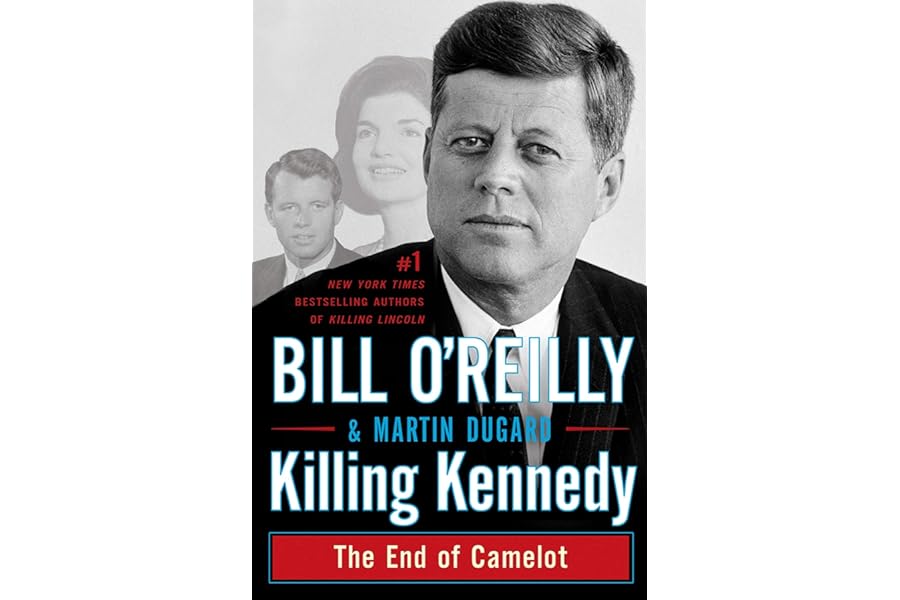One Sentence Summary
Killing Kennedy: The End of Camelot is a book by American journalist Bill O’Reilly which serves as a broad yet detailed examination of the assassination of President John F. Kennedy, the events leading up to it, and the aftermath.
Book Genre
Non-Fiction, Crime
Main Topic Of The Book
The main topic of Killing Kennedy is the assassination of President John F. Kennedy and its immediate aftermath.
Key Ideas
- The events leading up to Kennedy’s assassination. The book starts by examining the different historical events that made an impact on Kennedy and led to his assassination, including the civil rights movement, the Cuban Missile Crisis and the Vietnam War.
- The conspiracies behind the assassination. O’Reilly investigates the murky history of the assassination and the different conspiracies that have been suggested by different theorists.
- The investigation and conclusions. The book contains O’Reilly’s take on the investigation, the autopsy and the historical evidence surrounding the events, ultimately concluding that Lee Harvey Oswald acted alone in killing Kennedy.
Main Parts Of The Book And A Short Summary
Killing Kennedy consists of eleven chapters which cover the entire story of Kennedy’s assassination and its aftermath.
- Chapter 1 provides an overview of Kennedy’s life and times, looking at the various historical events and decisions that shaped his presidency.
- Chapter 2 looks at the different people surrounding him, such as his family and close aides.
- Chapter 3 looks at Kennedy’s political opponents and discusses how they used the issue of civil rights, Communism and the Vietnam War as a means of attacking him.
- Chapter 4 examines the assassination itself, investigating the motives of the various suspects and looking at the evidence gathered by authorities.
- Chapter 5 focuses on the role played by Lee Harvey Oswald, and how his actions and beliefs led him to become the prime suspect in the assassination.
- Chapter 6 looks at the different conspiracy theories that attempted to explain the assassination, from the involvement of the CIA to foreign governments.
- Chapter 7 examines the theories about Kennedy’s killer’s identity, and whether there may have been more to the assassination than a lone gunman.
- Chapter 8 investigates the media’s role in the assassination, and the popular response to the killing of the president.
- Chapter 9 looks at the aftermath, including the Warren Commission’s investigation into the assassination and the eventual conclusion that Lee Harvey Oswald acted alone in killing Kennedy.
- Chapter 10 examines the subsequent legacy of the assassination, including the various memorials and monuments dedicated to Kennedy’s memory.
- Chapter 11 is a conclusion to the book, summarizing the key points and providing O’Reilly’s view on the events.
Key Takeaways
- The assassination of President John F. Kennedy was the result of a complex mix of historical and personal events.
- Lee Harvey Oswald was the lone gunman behind the assassination.
- Despite a variety of conspiracy theories, no evidence has been found to suggest otherwise.
- The assassination had a profound impact on American and world history, leading to a permanent change in the way the presidency and other executive positions are viewed.
Author’s Background And Qualifications
Bill O’Reilly is an American journalist, author and political commentator, who served as a national correspondent for CBS News and later as the host of his own show, The O’Reilly Factor. He is a bestselling author, having written or co-written over 100 non-fiction books, many of which focus on American politics and history.
Target Audience
Killing Kennedy is suitable for general readers who are interested in the story of President Kennedy’s assassination, and also people who have a deep interest in US politics and history.
Publisher And First Publication Date
The book was first published in 2012 by Macmillan publishers.

